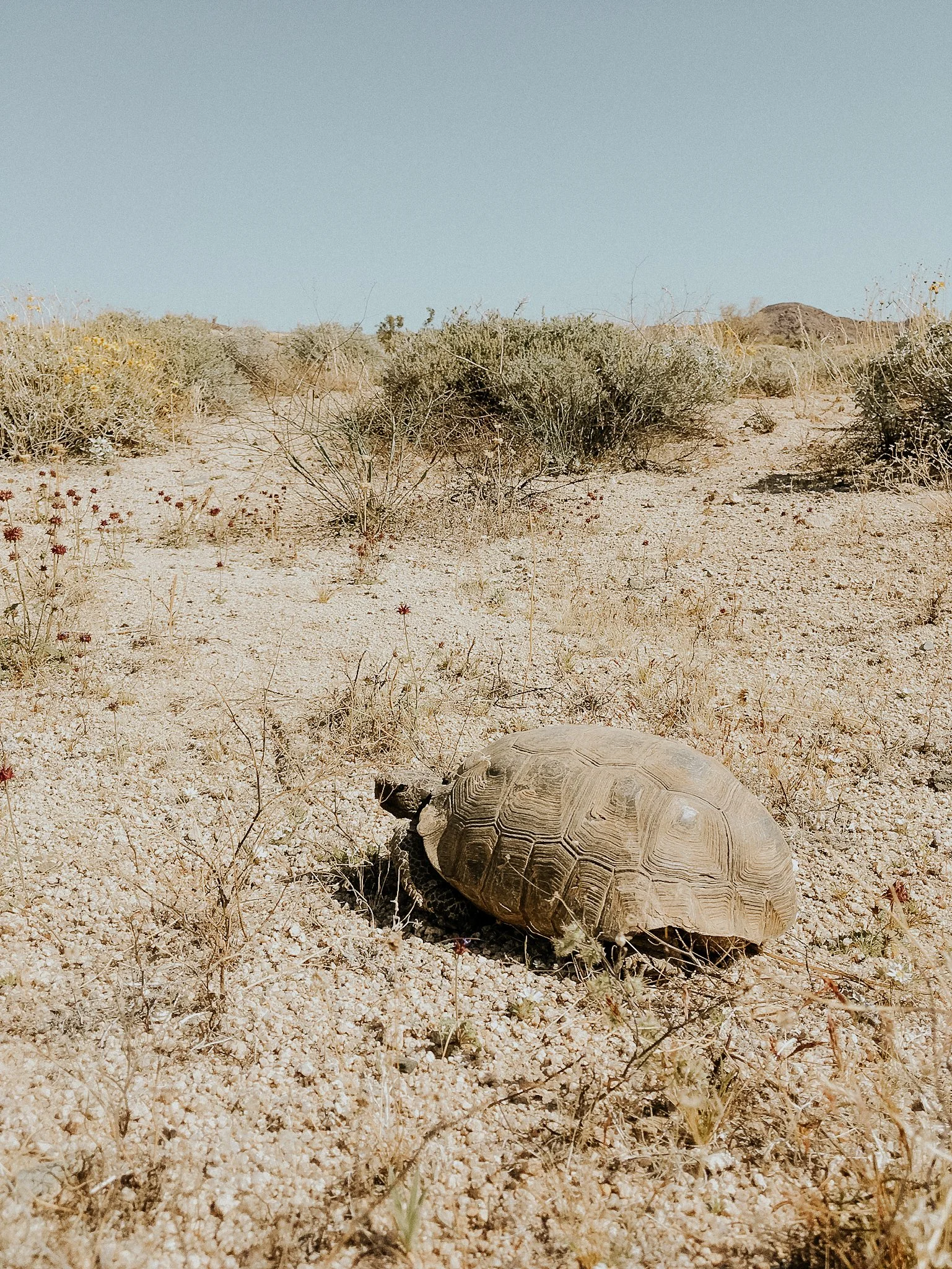10 Animals You Could Encounter While Exploring Joshua Tree National Park
Joshua Tree Wildlife Illustration Print. To purchase click here.
Joshua Tree National Park is known just as much for its stunning desert landscape and iconic rock formations as it is for its diverse wildlife. While visiting Joshua Tree National Park, you can expect to see a wide variety of animals, ranging from black-tailed jackrabbits to roadrunners. Here are ten animals that you might encounter during your visit to Joshua Tree National Park as well as when you are visiting with us at WKNDR Starside or Parkside (TO LEARN MORE CLICK HERE).
1. Desert Bighorn Sheep
The Desert Bighorn Sheep is a majestic animal that is native to the southwestern United States. These sheep can be found throughout the park, and they are often seen near the rocky outcroppings. They have a distinctive look with their large curved horns, and they are known for their ability to navigate steep terrain.
2. Black-Tailed Jackrabbit
The Black-tailed Jackrabbit is a common sight in Joshua Tree National Park. These rabbits are known for their long ears and powerful legs that help them outrun predators. They can be seen foraging for food in the early morning and evening hours.
3. Mojave Rattlesnake
The Mojave Rattlesnake is a venomous snake that is found in the park. These snakes are easily recognizable by the distinct rattle on the end of their tail. While they can be dangerous, they are an important part of the desert ecosystem.
4. Coyote
The coyote is a common predator in Joshua Tree National Park. These animals are known for their intelligence and adaptability. They are often seen hunting for small mammals, such as rabbits and rodents.
5. Desert Tortoise
The Desert Tortoise is a unique animal that is native to the Mojave Desert. These tortoises are known for their longevity, with some living over 100 years. They can be seen wandering around the park, looking for food and shelter.
6. Roadrunner
The Roadrunner is a bird that is native to the desert. These birds are known for their distinctive appearance, with a long tail and a crest of feathers on their head. They are often seen running along the ground in search of food.
7. Western Diamondback Rattlesnake
The Western Diamondback Rattlesnake is another venomous snake that can be found in Joshua Tree National Park. These snakes are easily recognizable by the diamond-shaped pattern on their back. They are an important part of the ecosystem and should be admired from a distance.
8. California Condor
The California Condor is a rare sight in Joshua Tree National Park. These birds are an endangered species, and efforts have been made to reintroduce them to the wild. If you are lucky enough to spot one, you will be treated to a majestic sight.
9. Black Widow Spider
The Black Widow Spider is a venomous spider that can be found in the park. These spiders are easily recognizable by the red hourglass shape on their abdomen. While they can be dangerous, they are an important part of the ecosystem.
10. Kangaroo Rat
The Kangaroo Rat is a small mammal that is native to the desert. These rats are known for their long hind legs, which allow them to hop like a kangaroo. They are often seen foraging for food in the early morning and evening hours.
Joshua Tree National Park is home to a diverse array of animals. From the majestic Desert Bighorn Sheep to the tiny Kangaroo Rat, there is something for everyone to see. While visiting the park, it is important to respect the wildlife and admire them from a safe distance. And to know if you are a safe distance from the animals you may encounter just make sure to hold up your thumb, extend your arm all the way, close one eye, and see if you can hide the animal with your thumb. With a little luck and patience, you may even get to see some of these animals up close and personal, but not too personal.
Let us know which of these you’ve seen when visiting Joshua Tree National Park and what others you would add to this list in the comments below.











